Tags
boat, La Conciergerie, Marie-Antoinette, Paris, pont, prison, Revolution, river, Saint-Michel, Seine
Our Sunday began with bright sunshine; the rain had gone and with it the gloom and anxiety. We have breakfast at the Saint Severin brasserie on Boulevard Saint-Michel and with no pre-existing plans, decide to revisit the place so evocative of the French Revolution – La Conciergerie.
Crossing Pont Saint-Michel we stop to look up and down the Seine at the beautiful views, and head up Boulevard Palais on the Ile-de-la-Cité past Palais de Justice to La Conciergerie.
La Conciergerie was originally a palace and Royal residence firstly of Hugues Capet, the first Capetian king. In the 14th century under Philippe IV the Fair the palace became a prestigious symbol of the monarchy and the seat of the Parlement of Paris. At the end of that century Charles V left the residence fearing his life, leaving a steward or concierge with legal powers to run the palace and prison.
The prison was modernised by Louis XVI after a fire in 1776, and later used during the Revolution when the Revolutionary Tribunal took possession of it. Over just two years a staggering 2,780 people sentenced to the guillotine lived their last moments here.
The lower medieval hall we see was used as a dining hall for the Royal Guard and staff – around 2000 in all – who worked for the king and his family. There is currently a striking modern art display of George Rousse amongst the columns of the ground floor past the entrance.
Many famous identities were among those imprisoned here before being executed and you can read the full list of those held here before execution on plaques on the walls.
Along with Queen Marie-Antoinette, there was her husband King Louis XVI, the woman who murdered one of the outspoken leaders of the Revolution Jean-Paul Marat, Prince Napoleon, Robespierre, leader of the Reign of Terror of the Revolution (when anyone presumed to be an enemy of the Revolution could be arrested), and Jeanne de Valois (known as the Comtesse de la Monte, who was behind the so-called ‘necklace plot’).
Outside we walk through the Woman’s Courtyard which still has the fountain where the women prisoners would wash their clothes in the morning.
Back inside we see the Prisoners’ Gallery, prisoners quarters ranging in comfort levels according to the prisoner’s ability to pay, and the Grooming Room where the condemned were relieved of their personal effects, hands tied behind their backs and heads shaved before being taken off to the guillotine.
We peer into a reconstruction of Marie-Antoinette’s cell and the Marie-Antoinette Chapel which was built on the site of her former cell.
After this trip into the grim Revolutionary past, we come back into the sunshine and walk to Pont Neuf to take a boat trip on the Seine. It is a perfect day for being on the water with blue skies and sunshine Paris is positively glowing. Many people are out walking along and sitting beside the river. Now and then we snap out of our relaxed state when we hear a siren, ears alert as to whether this is just a single response to a usual event or something more.
Very pleased we took the boat ride, we walk into Saint‑Germain‑des‑Prés for lunch at Cafe Le Buci in Rue Mazarine – a warming veal casserole and creamy chicken pasta washed down with a Beaujolais Nouveau.
We join the many locals and tourists strolling around the streets or sitting outside in the brassieres and bars enjoying the last of the day’s sun. We cave into temptation when we see rows and rows of different flavoured éclairs in the window of L’Éclair de Génie.
Later on we share a salmon gratinee for dinner and return to our hotel, pleased with our day in the sun and seeing the people once again out enjoying the sights and experiences of Paris.
People enjoying the sun, the sights, the river – life.

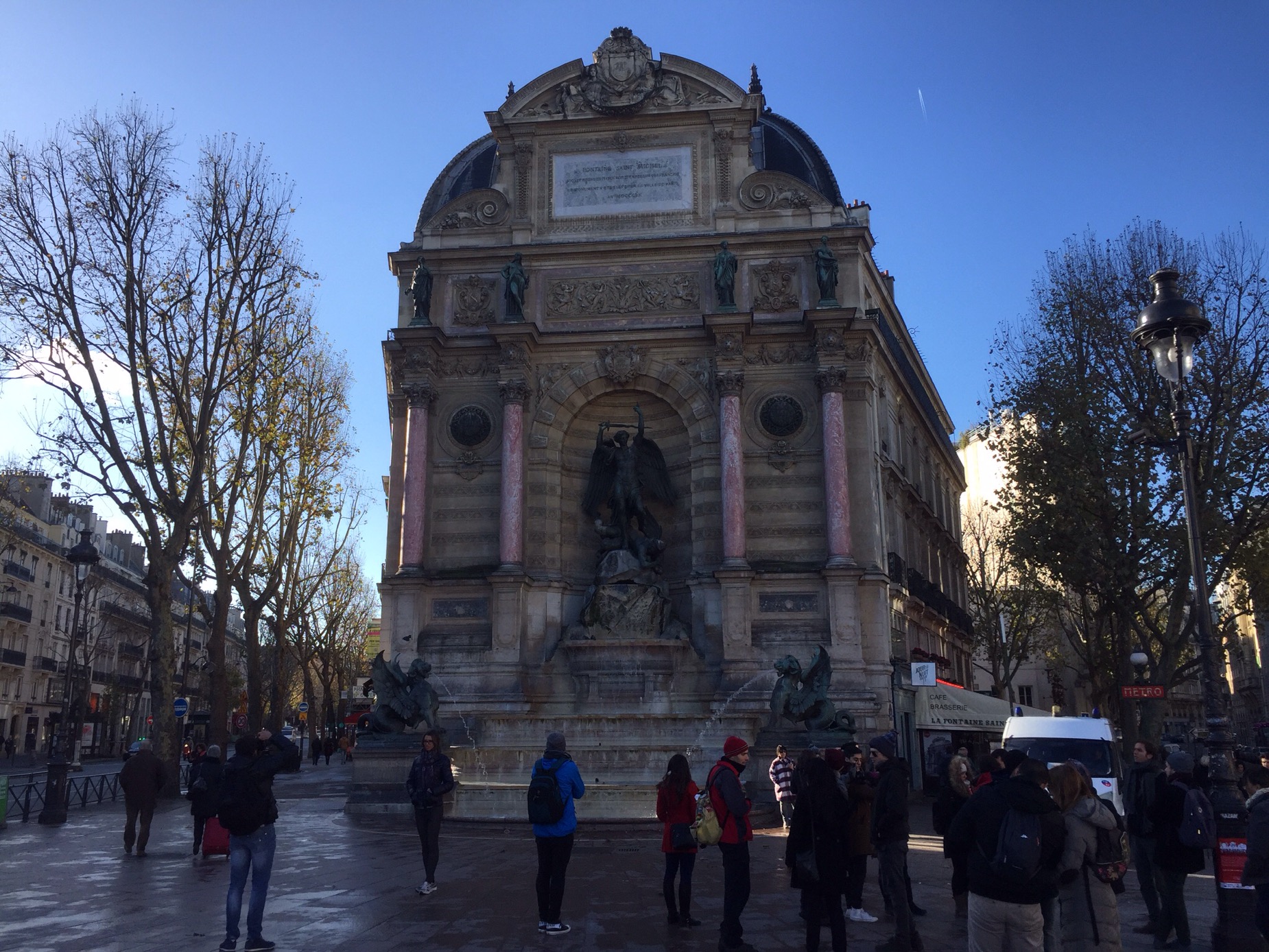
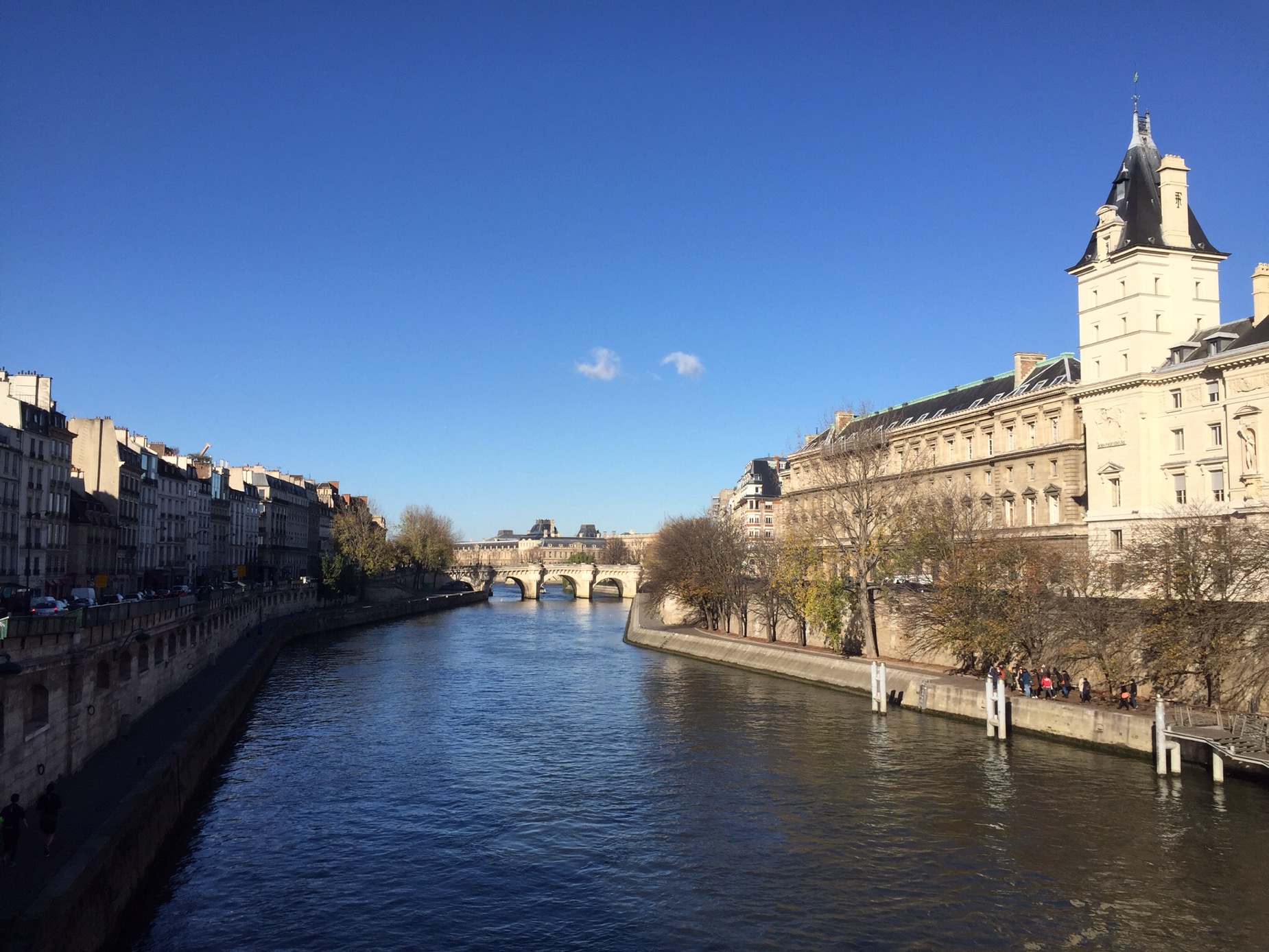
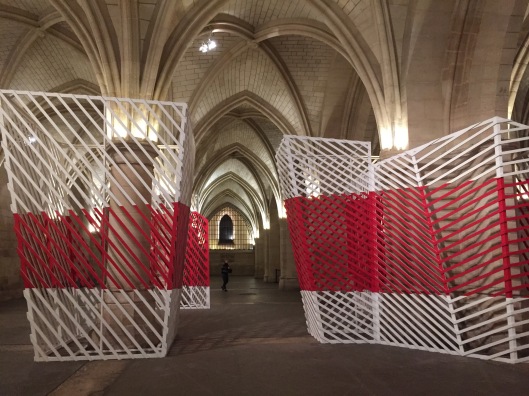
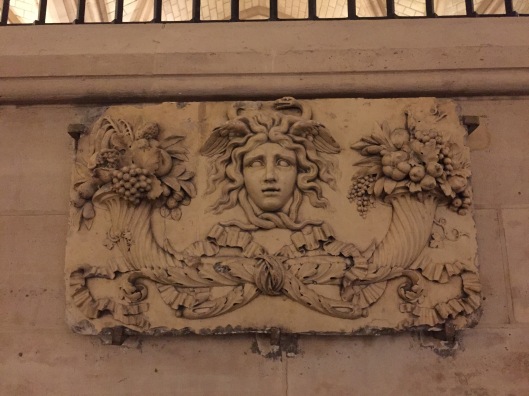
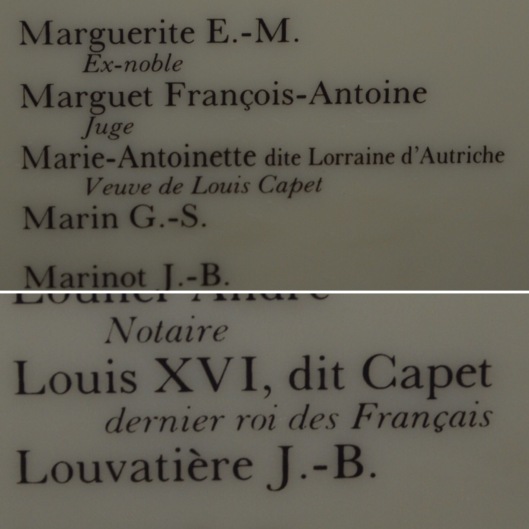


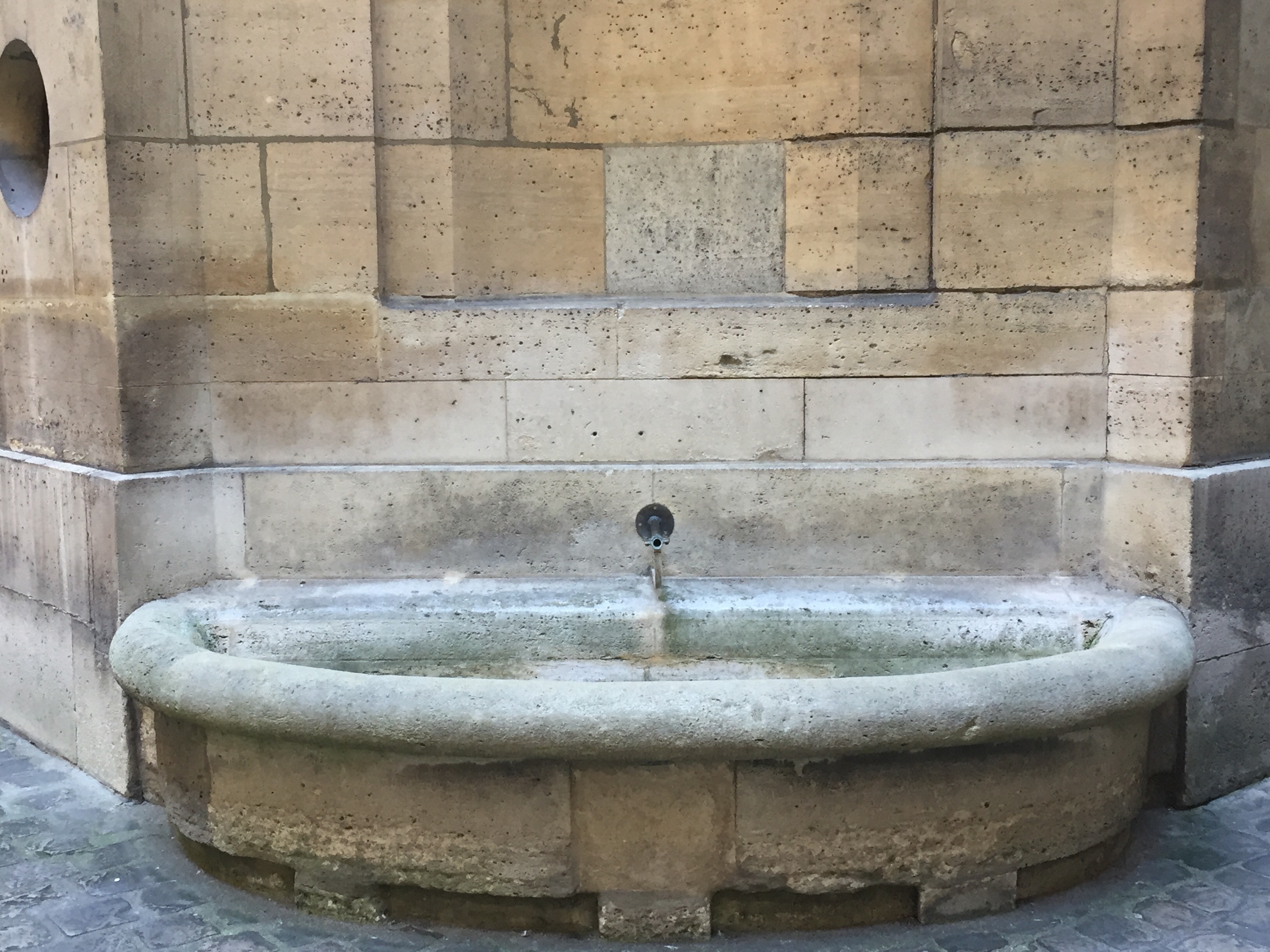
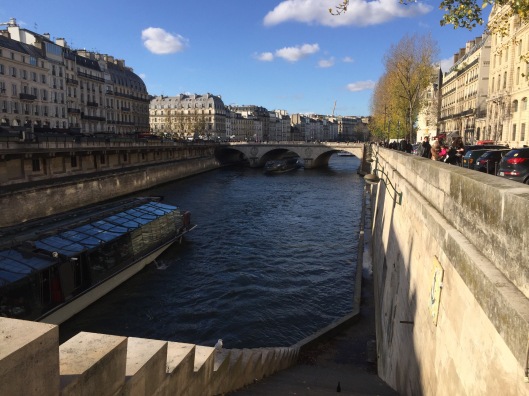


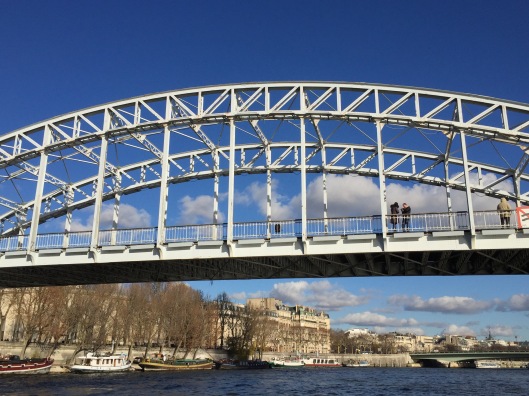

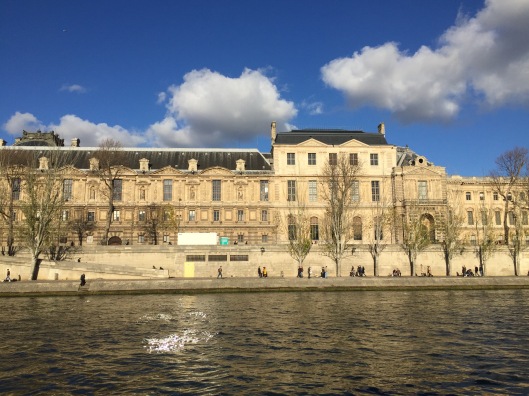
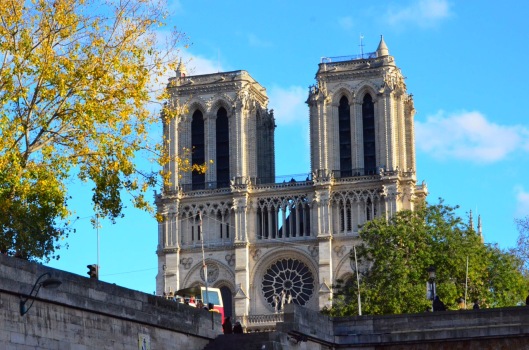
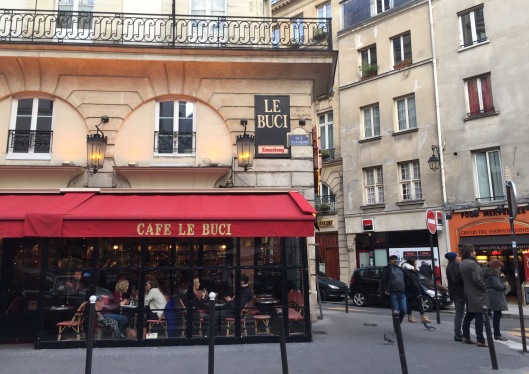
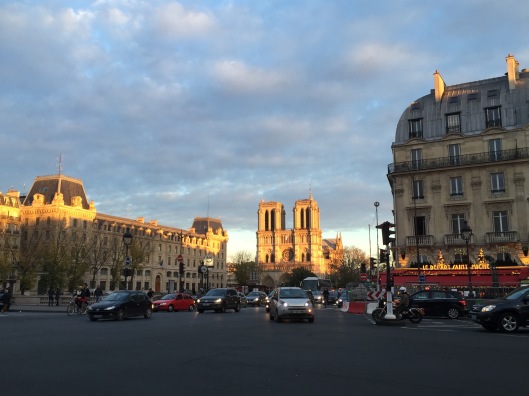
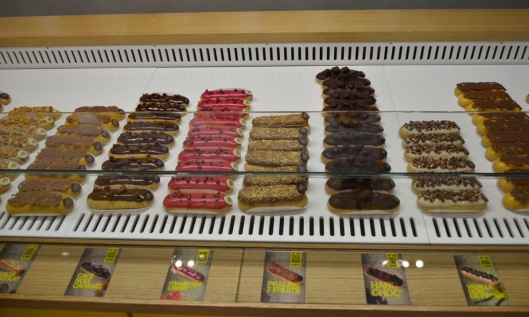
Glad you guys were not in Paris the previous week. Surely you are home soon. Do you need a pick-up at the airport?
LikeLike